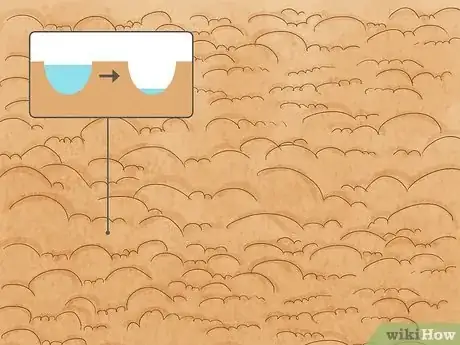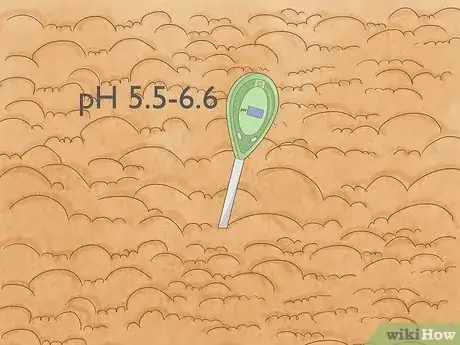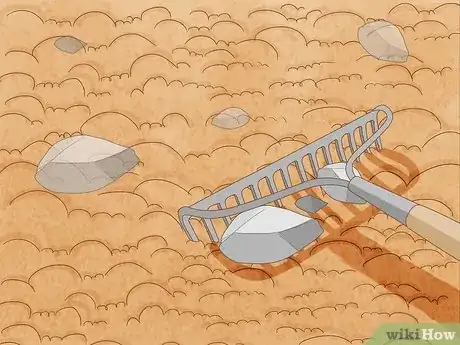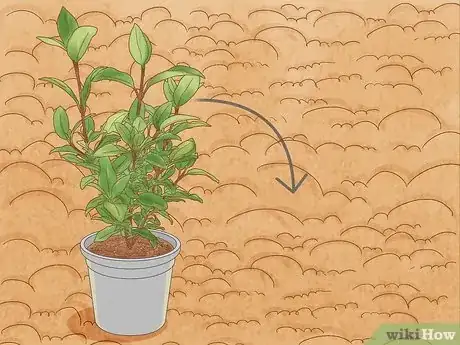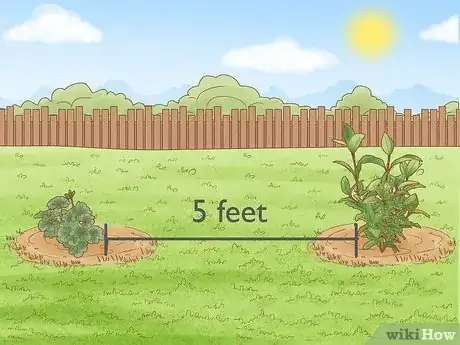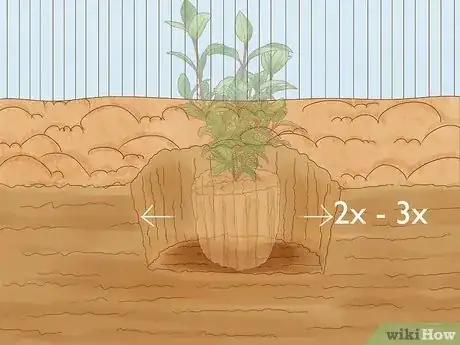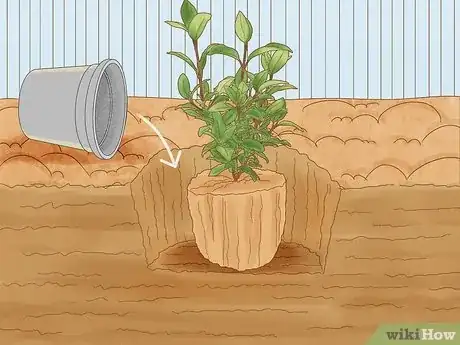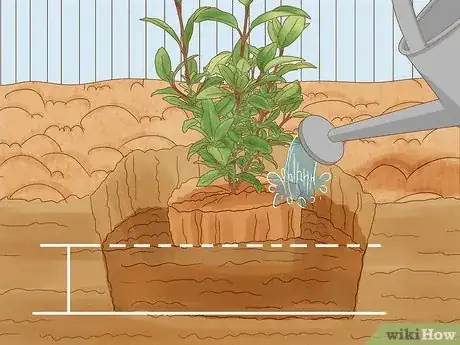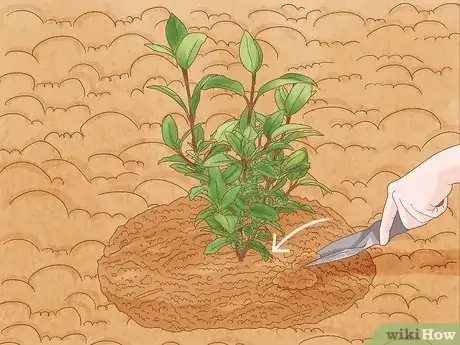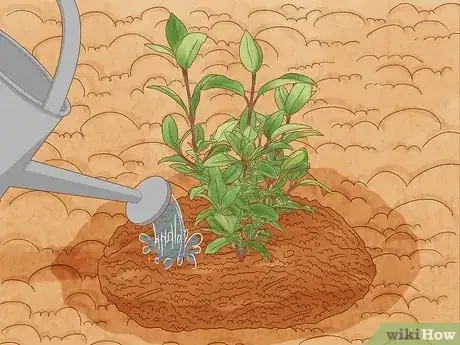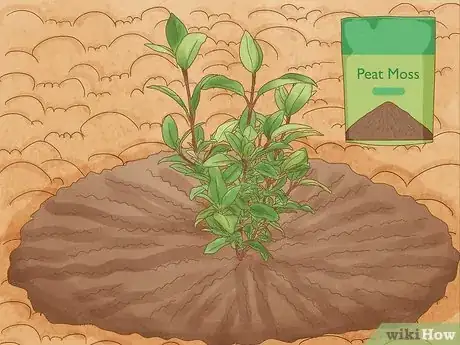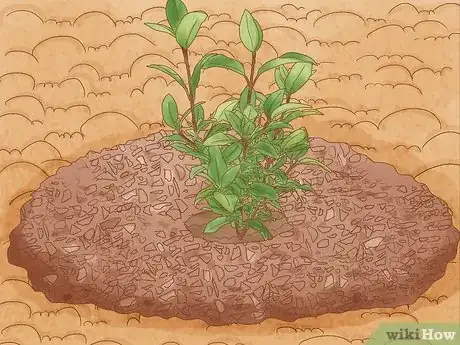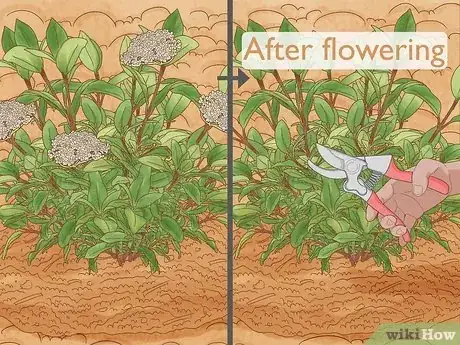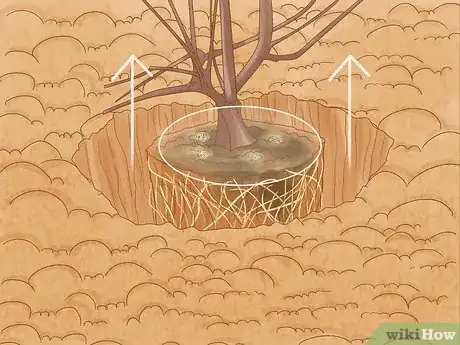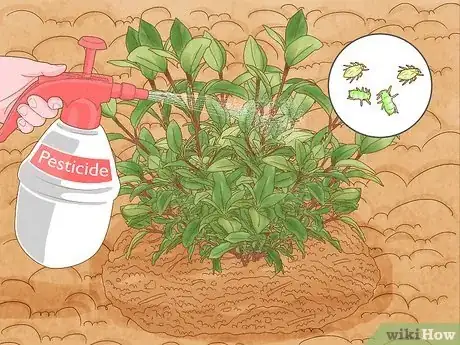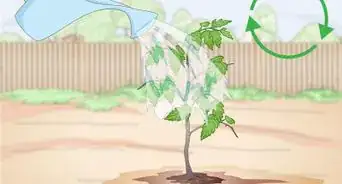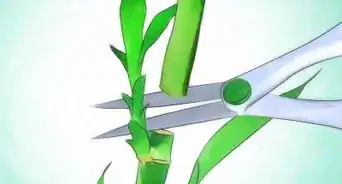X
This article was co-authored by Maggie Moran. Maggie Moran is a Professional Gardener in Pennsylvania.
There are 8 references cited in this article, which can be found at the bottom of the page.
This article has been viewed 19,875 times.
Viburnum is a large group of hardy plants used as shrubs and hedges. These plants belong in spots with full sunlight and moist, well-draining soil. Plant them in wide holes several feet from other plants and obstacles. Maintain your plants with yearly pruning and weekly watering during dry months. With a little care, viburnum will become a colorful plant in your garden no matter the climate.
Steps
Part 1
Part 1 of 3:
Finding a Planting Spot
-
1Find an area with full sunlight. Viburnums thrive in total sunlight. They’re hardy plants, so they can resist the strongest weather conditions in your yard. Partial shade is also acceptable, and most viburnums will still do well in it. Partial shade happens in areas that get four to six hours of direct sunlight a day.[1]
- For example, partial shade can be behind your house. The area be sunny in the morning, but get covered by the house’s shadow later on. Full shade areas, such as those under larger plants, get less than three hours of direct sunlight a day.
- A few varieties, such as arrowwood, may survive in low shade, but sunny or partially shaded areas are ideal.
-
2Make sure the soil drains well. After a hard rain, observe your yard. Avoid any spots where the rain doesn’t drain after six hours. While some varieties will survive in wet soil, most viburnums do best in moist, drained soil.[2]Advertisement
-
3Check for slightly acidic soil. You can get a soil testing kit from a home and garden store. Viburnums generally take well to neutral or slightly acidic soil. If your soil is out of balance, try lowering the pH with sulfur or raising it with limestone. The optimal soil pH is between 5.5-6.6.[3]
- Viburnums are hardy, so some may still grow in slightly alkaline soil.
-
4Clear out the planting spot. If weeds and grass grow in the area, chances are the spot is good for growing. However, you’ll have to dig up all of these plants that will compete for resources. Remove any rocks you find as well. Rake the soil to till it and break up dirt clumps. Finish by patting the soil level.[4]
Advertisement
Part 2
Part 2 of 3:
Planting the Viburnum
-
1Plant viburnum in early fall or spring. The fall is a great planting time. Wait until the summer heat fades and plant early so the viburnum has a chance to settle in before winter. Spring planting is also common since that’s when most plants are available for purchase.[5]
-
2Place them far away from other plants and obstacles. Measure about five feet (1.5 meters) from other plants. Keep the spot five feet from any obstacles, such as sidewalks, driveways or buildings. Many varieties grow big and tall, so you may need to provide even more space for them to grow.[6]
- Thinking what the viburnum will look like at maturity will give you a guideline on how much space you need. The plant will grow thick and tall with green leaves covered by flower clusters.
-
3Dig a hole larger than the plant’s roots. Dig your hole as deep as the plant’s root ball. If the viburnum was grown in a container, you can make the hole as deep as the container. Follow up by widening the hole on all sides. It should be two or three times as wide as the root ball.[7]
-
4Remove the plant from the container. It’s important to take the viburnum out of the container before planting it in the ground. This allows the roots to spread through the hole you made. Carefully remove the plant and set it in the middle of the hole.
- Viburnum can be grown above ground in a pot. Choose smaller varieties, like the European cranberry bush, that fit in well-draining containers. Be prepared to water the plant more often.
- Viburnum cuttings can be planted. Place them cut-down in a container filled with half peat and half sand. Cover the container, place it in indirect sunlight, and keep the soil moist.
- Seeds can be grown, but are much more difficult. They take several years to sprout and grow, leaving the seed vulnerable to the environment.
-
5Fill the hole halfway and water it. Push some of the soil back into the hole. When the hole is halfway full, stop and water it. Water it well enough to get the soil rich and moist. It’ll feel easy to dig through. Pick up some soil. It’ll stick together, even if you bounce it in your hand.[8]
- You may also amend poor soil with a layer of compost at the bottom of the hole. This will provide the plant with nutrients as it grows.
-
6Finish filling the hole once the water has drained. Let the soil return to normal first before you finish working. Once it has, return the rest of the soil to the hole. The roots of the plant should be covered. Make sure the plant is secure in the soil.[9]
-
7Water the soil thoroughly. Finish planting the viburnum by giving it another dose of water. Spray water over the planting area until the soil is moist again. Don’t go overboard, or else you’ll create the damp conditions that lead to diseases like root rot.
- Try not to leave any water on the blooms and leaves because this may lead to mildew.
Advertisement
Part 3
Part 3 of 3:
Maintaining Viburnum
-
1Surround the plant with compost in spring. Get a good compost from a gardening store, such as one with peat moss or manure. Spread a thin layer of it over the growing area. Spread it all the way from the plant to the ends of the bottom branches.[10]
- You can also add compost again in summer and fall. You won’t need to apply compost more than once a year, but extra composting provides extra nutrients.
-
2Cover the soil with mulch. Keep a two inch (five cm) layer of mulch, such as wood chips, over the growing area. You can place it down right after you finish adding compost. Start the mulch layer a couple of inches beyond the viburnum’s stem. Spread it a foot (30 cm) beyond the viburnum’s branches.[11]
- It’s important to avoid placing the mulch up against the plant. Since the mulch helps absorb water, it can cause your plant to get damp and rot.
-
3Water the plant during dry months. After the initial watering, viburnum plants do well on their own. The only problem comes when the soil dries out during summer. If your yard receives less than one inch (three cm) of rain in a week, water the plant until the soil is moist. Do this two or three times a week so the soil stays moist.
- Potted viburnum requires more observation. You may have to water them once or twice a day in hot weather. Check the soil to make sure you don’t add too much water.
- Use your judgment when watering the viburnum. If the soil seems too dry, water it.
-
4Prune the plant after it flowers. Soon after the viburnum flowers in spring, use your hedge clippers to get it back under control. Trim off all excess growth, including new branches coming up from the roots. Take out any broken branches or diseased spots to keep your plant healthy and happy.[12]
- Every third year, you may slim the plant to a third or half of its size. This rejuvenation pruning leads to denser growth.
-
5Treat spotted leaves with an antifungal. You may see black spots from fungi or green spots from algae on viburnum leaves. Mildew may also cause light-colored spots. These can all be treated by an antifungal spray from a gardening center. Follow the directions on the label and use sprays sparingly.[13]
- These problems occur because of too much water. Keep the viburnum away from other plants so air circulates around it. Trim off any diseased leaves and throw them away.
- Ensuring that your plant gets plenty of sunlight during the day will also help to prevent diseases.
-
6Remove yellowing and stunted plants. These are signs of armillaria root rot. You may see white fungus hidden under the bark or black strands on the roots. The plant won’t survive. Remove the soil and plant other viburnum away from that spot.
- Make sure viburnum is well-watered, but also planted in well-draining, fertilized soil. This stops root rot in its tracks.
- If your plant’s root system becomes infected, then you will need to remove and destroy the whole plant including the roots. Otherwise the infection will spread.
- Make sure to sterilize your cutting tools by applying rubbing alcohol to them before and after using them.
-
7Spray away pesky insects with pesticides. Viburnum doesn’t suffer many pest problems. You may notice insects where leaves and flowers turn colors and drop from branches. Search for signs of infestation. Aphids, spider mites, and root weevils are some of the pests that infect viburnum. Remove heavily-infested branches and treat the plant with a low-toxicity insecticide.
- Clear out any weeds and fallen leaves beneath the viburnum to help limit infestations.
- Keep in mind that you may also be able to remove pests using a strong stream of water or by picking them off with your hands.
Advertisement
Expert Q&A
-
QuestionHow long does Viburnum Tinus take to grow?
 Maggie MoranMaggie Moran is a Professional Gardener in Pennsylvania.
Maggie MoranMaggie Moran is a Professional Gardener in Pennsylvania.
Home & Garden Specialist This is a fast-growing plant. It can grow between 15.5-23.5 inches each growing year.
This is a fast-growing plant. It can grow between 15.5-23.5 inches each growing year. -
QuestionHow far apart should I plant my viburnum?
 Maggie MoranMaggie Moran is a Professional Gardener in Pennsylvania.
Maggie MoranMaggie Moran is a Professional Gardener in Pennsylvania.
Home & Garden Specialist To figure out how far apart to plant the bushes, take the mature width of your viburnum plant and divide it by 2.
To figure out how far apart to plant the bushes, take the mature width of your viburnum plant and divide it by 2. -
QuestionCan you grow viburnum in a container?
 Maggie MoranMaggie Moran is a Professional Gardener in Pennsylvania.
Maggie MoranMaggie Moran is a Professional Gardener in Pennsylvania.
Home & Garden Specialist Yes, although it is still going to need the required amount of both sunlight and water to grow well.
Yes, although it is still going to need the required amount of both sunlight and water to grow well.
Advertisement
Things You’ll Need
- Water source
- Compost
- Mulch
- Shovel
- Tape measure
References
- ↑ https://garden.org/plants/group/viburnums/
- ↑ http://www.bhg.com/gardening/plant-dictionary/shrub/viburnum--/
- ↑ http://www.finegardening.com/viburnums-are-versatile-shrubs
- ↑ https://garden.org/learn/articles/view/1316/
- ↑ http://www.clemson.edu/extension/hgic/plants/landscape/shrubs/hgic1075.html
- ↑ https://garden.org/plants/group/viburnums/
- ↑ https://www.gardeningknowhow.com/ornamental/shrubs/viburnum/viburnum-shrub.htm
- ↑ https://garden.org/plants/group/viburnums/
- ↑ http://homeguides.sfgate.com/plant-viburnums-23254.html
About This Article
Advertisement

